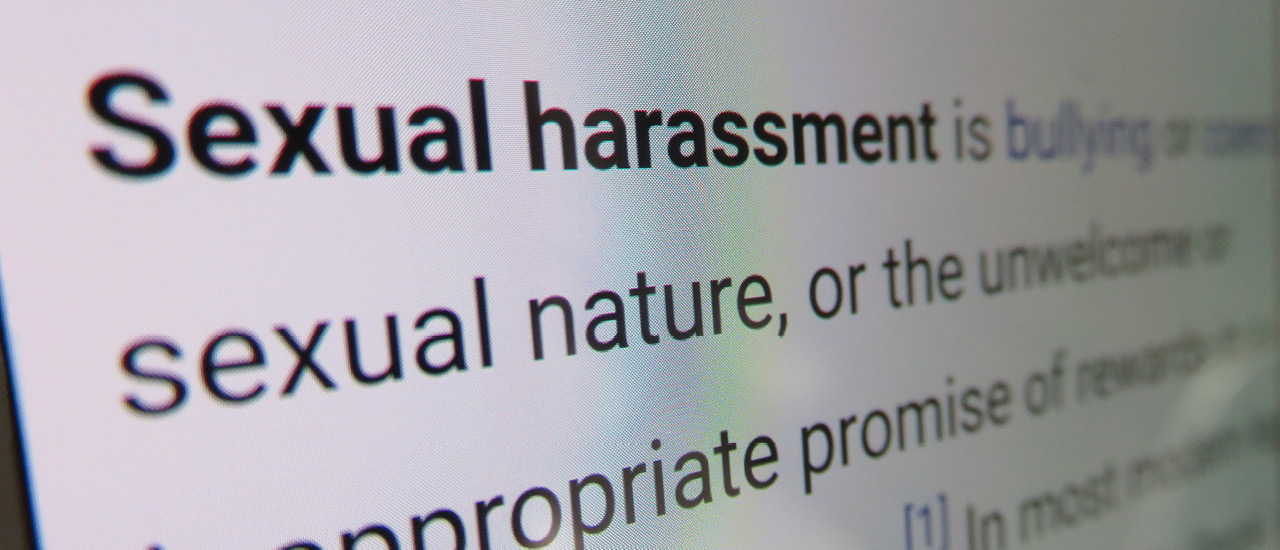Survey: Most Workplace Sexual Harassment Victims Don’t Report It

Thanks to the #MeToo movement, more victims are feeling empowered to come forward about workplace sexual harassment, but according to a new CareerBuilder survey, most continue to keep quiet.
Of those who have been sexually harassed, the majority (72%) did not report the incident, and more than half (54%) did not confront the person responsible for harassment.
Looking at who has felt sexually harassed in the workplace, more than 1 in 10 workers (12%) say they have, with women (17%) more likely to feel harassed than men (7%), and 17% of those ages 18–34 report feeling sexually harassed at work compared to those 35–44 (11%), 45–54 (10%), or 55+ (9%).
This survey was conducted online by The Harris Poll from Nov. 28 and Dec. 20, 2017, and included a representative sample of 809 full-time workers across industries and company sizes in the U.S. private sector.
An Issue Across Levels
When asked who they were harassed by, employees pointed to a number of statuses and positions.
Twenty-eight percent of those who have felt sexually harassed at work said they were sexually harassed by their boss, and nearly 2 in 5 (37%) said they were sexually harassed by more than one person.
Overall, those who felt harassed said the person(s) responsible for the harassment held these positions:
- Peer: 60%
- Manager or supervisor: 36%
- Client: 9%
- Senior management: 8%
- Vendor: 5%
- Direct report: 3%
Most Sexual Harassment Victims Remain Silent
While the majority of those who say they have felt sexually harassed in the workplace say they did not confront the person responsible for harassment, of those who did (46%), 13% said the situation stayed the same and 9% said it became worse.
Overall, 28% of those harassed said they reported it, with 15% telling the person’s boss or someone higher up in the organization, 11% telling HR, and 3% the legal department.
Those who did not report the sexual harassment most often did not because they didn’t want to be labeled a troublemaker (40%), said it was their word against the other person (22%), or were afraid of losing their job (18%)*.
On the other hand, of those who did report it, 76% said the issue was resolved—29% said the person stopped the harassment, and 21% said the person was fired**.
While most employees stick it out, 13% of those harassed said they left their job because of it.
Recommendations for Employers and Employees
If you’re a business owner, HR manager, or supervisor, CBIA’s HR Counsel Mark Soycher recommends 12 steps for improving sexual harassment prevention at your workplace, including updating your policy, encouraging the prompt reporting of complaints, and guarding against retaliation.
If you’re dealing with sexual harassment in the workplace or if you’ve been a victim, Rosemary Haefner, chief human resources officer at CareerBuilder, has these suggestions:
- Know your rights. Find out if your company has a policy in place. The policy will usually include your rights, protections against retaliation, and an outline of what happens if a claim is reported. Even if your company doesn’t have a policy, keep in mind that that according to the EEOC, sexual harassment is a form of sex discrimination. You have the legal right to be protected from sex discrimination under Title VII of the Civil Rights Act of 1964, which outlines protections that Americans have in the workplace. Other state laws or employer policies may also protect you from sexual harassment.
- Write it down. Write down what you plan to say to report the harassment. Include as many specifics as possible. Make sure you clarify how the harassment has affected your ability to do your job. Whether or not you ultimately decide to file a complaint, it can be useful to keep track of the times you have felt harassed and the types of harassment you have experienced.
- Voice your concern. If you feel comfortable speaking to the person directly, politely but firmly tell him or her to stop, being specific about what behaviors make you uncomfortable. You can send the person a letter if you don’t feel comfortable talking face-to-face.
- Tell someone. If you don’t feel comfortable speaking to the person directly, report the harassment to your superior, your harasser’s superior, or your HR department. How you should go about this will depend on your company’s particular policies.
*Caution: Small base size (less than n=100)
**Caution: Very small base size (less than n=50); results should only be viewed as directional
RELATED
EXPLORE BY CATEGORY
Stay Connected with CBIA News Digests
The latest news and information delivered directly to your inbox.


